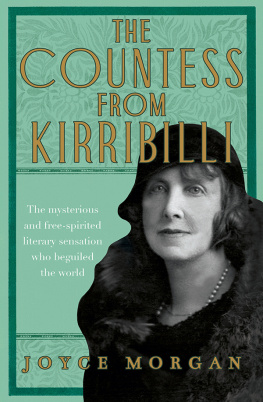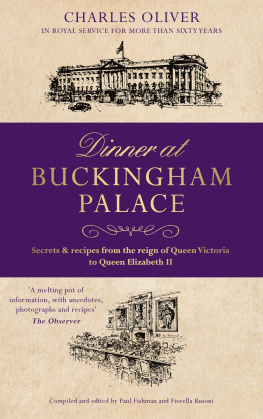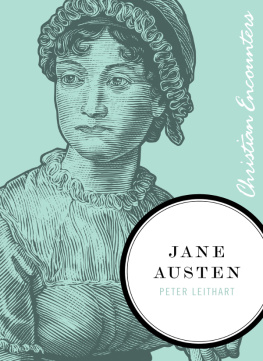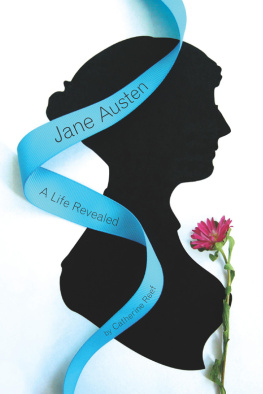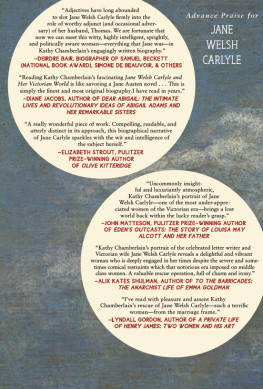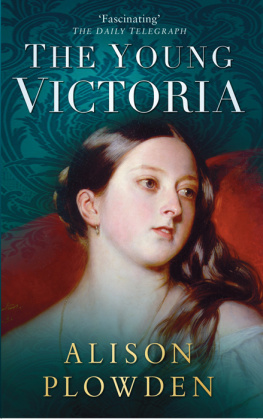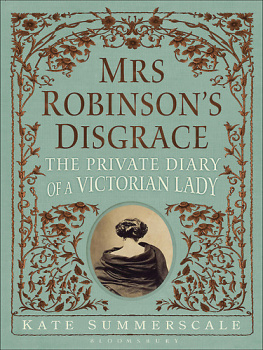
Reverend Matthew Lassetter was the first of Elizabeth von Arnims forebears to set foot in Australia. At various times her grandfather was a baker, a farmer, an auctioneer, a teacher and a lay preacher. He was a master of reinvention who exuded a whiff of disgrace. It mingled with the odour of mock turtle soup, oyster patties, veal and ham in the small shop he opened in Sydneys King Street in early 1834.
Family lore says Matthew ambushed his wifeElizabeths grandmotherinto marriage in Somerset, England. He took her to visit a church where a parson and witnesses were waiting. Elizabeth Bedford was a widow when she was frogmarched up the aisle. Matthew and Elizabeth soon sailed for Sydney with their infant son Frederic and arrived in 1832. They were accompanied by Elizabeths teenage daughter from her first marriage, Georgina. Matthew emigrated at the urging of his wifes sister Kezia, who had sailed into Sydney years earlier on a boat laden with potatoes and married a former convict, Lancelot Iredale. He was a Durham blacksmith who had been transported for stealing iron bars. After receiving a conditional pardon, Lancelot set up an ironmongery and hardware business in George Street and began to prosper.
Matthew Lassetter did not fare well. Despite the encouragement of his wealthy brother-in-law, money was short and he was soon down on his luck. After his daughter, Annie Mary, was born, Matthew shut up his Sydney shop. He took his family south to the remote island of Van Diemens Land, as Tasmania was then known. Van Diemens Land was a hell hole, the harshest of Britains penal colonies, to which seventy thousand souls were transported, many to be broken by floggings at Macquarie Harbour or solitary confinement at Port Arthur.
Transportation was at its height when Matthew arrived. He settled at Launceston, then a settlement of fewer than three thousand people. Miserable as life was for convicts, for a free man such as Matthew Lassetter, life in Van Diemens Land seemed more secure for his growing family. Another daughter followed. Elizabeth Waite Lassetterknown as Loueywas born in Launceston in 1836. Louey would become Elizabeth von Arnims mother. Matthew set up as a baker and became headmaster of an infants school. The headmasters position paid 100 a year, and came with a house as well as free coal and candles.
He soon made enemies as his dual role and income raised eyebrows. How could he give proper attention to the morals of the children under his care while running a bakery? An anonymous correspondent to the local paper demanded an answer. Matthew shot back. He arose around 4 a.m. to work in his bakery and could not be improving the morals of his little charges then since they were still slumbering on their pillows.
But it wasnt long before Matthew was in strife again, accused of selling underweight loaves. Another anonymous newspaper correspondentor perhaps the same oneclaimed Reverend Mr Light-weight had been seen pinching dough from his loaves after weighing them. Matthew strenuously rejected the claims.
He gave up his bakery and returned to farming at Longford, a hamlet outside Launceston. He was expelled for drunkenness from the Wesleyan Methodists in 1841. He eventually mended his ways and was readmitted to the Wesleyan fold.
The local Wesleyan Methodists were less forgiving of Matthews stepdaughter. The devout Georgina was refused full membership because she had not manifested sorrow for being married to an unbeliever. The unbeliever was an auctioneer named Joseph Bell. When Joseph became insolvent and moved with Georgina to Melbourne, Matthew reinvented himself once again and took over Josephs auctioneering business. Calico, sailcloth, worsted stockings, pigs and cart horses all passed through Matthews nimble hands.
Matthews wife Elizabeth died suddenly in 1844, leaving him with three children. By now Frederic was fourteen years old; for a time he helped his father on the Longford farm, but he soon left for Melbourne and found work with an auctioneer. Matthew was ill-equipped to care for Annie Mary and Louey, who were left largely unsupervised to fend for themselves.
When news of this reached their older half-sister Georgina in Melbourne, she sailed to Tasmania and rescued them. It may have suited Matthew Lassetter to have his daughters off his hands. He soon left for California.

In Melbourne, young Frederic Lassetter had found working for an auctioneer named Mr Easy was anything but. Frederic toiled from 8 a.m. to 10 p.m. and had little more than a hard ships biscuit to sustain him through. But his diligence impressed a Sydney businessman, George A. Lloyd, who offered him work as a clerk.
When Frederics uncle, Lancelot Iredale, died in 1848, his widow, Aunt Kezia, asked her young nephew to join the familys Sydney hardware business. Frederic knew little about running a firm, but Lloyd encouraged his capable clerk to accept the offer: Go into that business, and you will run round your competitors like a cooper round a cask.
Frederic became a partner in Iredale & Co in 1850. It was his big breakand his timing was perfect. The discovery of gold in New South Wales in 1851 meant demand boomed for spades, picks, revolvers and other tools would-be diggers needed. Gold fever spread as ragged bands of hopeful men headed to the diggings around Bathurst. So did the enterprising Frederic. With cartloads of goods, he bumped his way to the diggings at Turon.
The currency at the goldfields was gold dust, and Frederics first payment was just over two ounces of it. He kept it for life. Frederic had the golden touch. A shortage of coin in the colony in the 1850s saw his company issue copper tokens. These were accepted as legal currency and known as Lassetters Pennies.
Demand for his goods was strong, but obtaining stock was a battle. Shops with the best stock got the customers. Many goods had to be shipped from England. But merchants tightly controlled the shipping trade and onsold their goods by favour. Frederic developed an enterprising way of getting his hands on scarce merchandise and beating his rivals. He kept his pony saddled at his shop door. When a vessel came through Sydney Heads, he galloped down to Circular Quay, where an oarsman rowed him out to the ship, often before it had dropped anchor. On board, he inspected the manifest to see what goods had been consigned to which merchant. He would then visit the merchant, tell him his goods were arriving and make the first offer on the consignment. His competitors were aghast at such unorthodox, ungentlemanly ways. But it helped make his fortune.
Frederic began courting his first cousin Charlotte, Kezia Iredales daughter, and married the sixteen-year-old in 1852. He continued to prosper and was so successful that by the early 1860s he had taken over Iredale & Co. He renamed it F. Lassetter & Co., converted it to retail and built huge new premises that eventually covered three city blocks between George and Kent Streets. At the time of Elizabeths birth, her Uncle Frederics store, known simply as Lassetters, was the biggest in Sydney.

As Frederic was counting his Lassetter Pennies, a young Englishman sailed into Circular Quay. The captain of the ship that brought Henry Herron BeauchampElizabeths fatherto Australia in 1850 doubted his 25-year-old passenger would amount to much in Sydney, but he wished him well.
Despite the captains misgivings, Henry quickly set up as a Sydney shipping merchant trading in everything from flour and sugar to imported claret, English cheese and opium as well as kangaroo skins from Van Diemens Land. Business was brisk in the colony, where goods were scarce.
Next page
